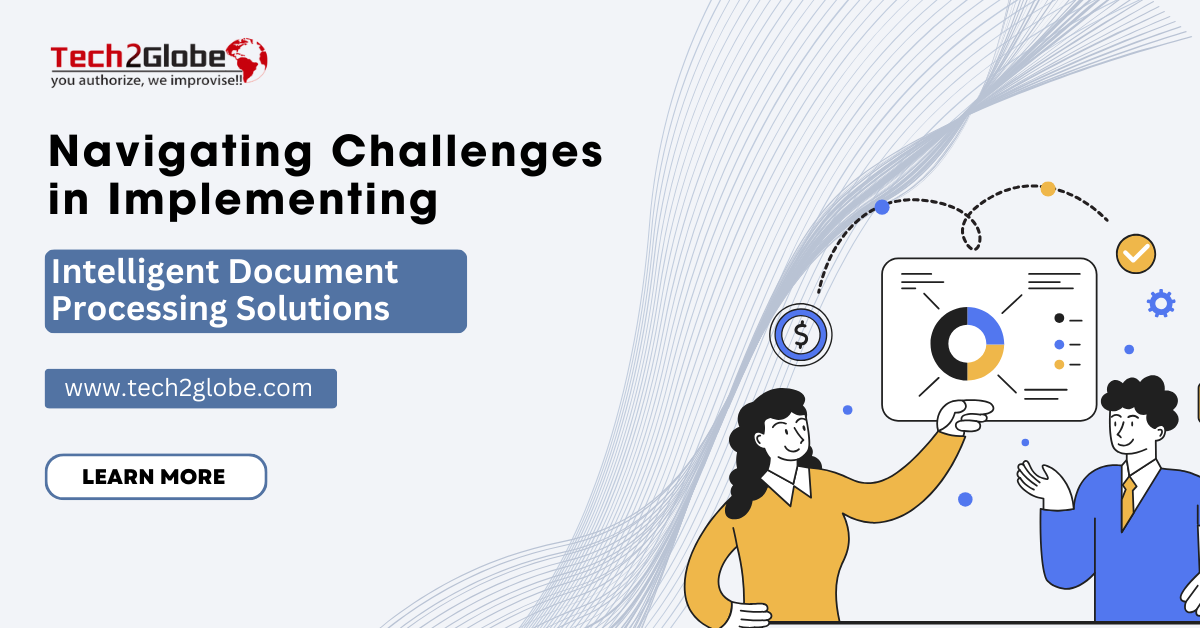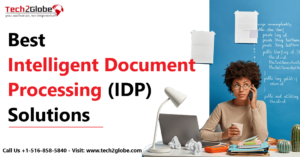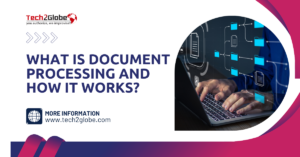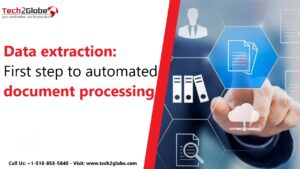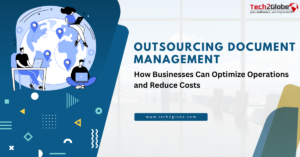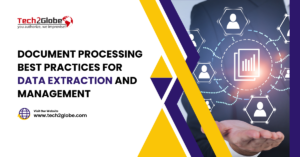How long does it take you to find mission-critical data when it is buried in a mountain of business documents? Is it hours or even days? If you haven’t automated your manual, document-heavy workloads, you’re probably spending more time searching for data than you’d like to. Intelligent Document Processing (or IDP) can automatically extract crucial data points in seconds, not days. IDP reviews your documents and then uses AI and decision rules defined by you to classify each document by type. You may integrate it effortlessly with your existing workflow technologies, such as Robotic Process Automation (RPA), to bring super-smart AI and cognitive capabilities to your critical business operations. Some IDP solutions include automation features, while others focus on the intelligent data extraction step.
The need for efficient document processing is more crucial than ever. Productivity can be enhanced through IDP solutions as these solutions streamline document work processes easily. Tech2Globe Web Solutions is aware of the challenges associated with implementing IDP solutions and offers comprehensive solutions to these challenges.
Traditional document capture technologies are unable to match the document processing requirements of today’s digital environment. The best part is that our document processing automation manages large amounts of unstructured data. We will help you in responding to opportunities faster without hiring more people, compliance transparency, fuel automated workflows with important data, and achieve faster ROI.
The Digital Transformation Imperative
In an era where data drives decision-making, embracing digital transformation is no longer an option but a necessity. Intelligent Document Processing solutions play a pivotal role in this journey by automating document-centric tasks, reducing manual errors, and accelerating workflows.
The challenges that organizations must address to unlock the full potential of these technologies:
1. Various Types of Documents
The client or supplier onboarding process is always related to many types of papers supplied by the client or supplier, such as passport information, identification, various application forms, statutory declarations, component documents, and so on. All documents supplied by the Client or Supplier as part of the procedure above vary in kind, form, and presentation.
An automated intelligent solution should be capable of categorizing documents by kind and nature, as well as capturing the essential information from each document using a template-based or template-based method, depending on picture type and complexity.
2. Bad Quality of Scanned Documents
Documents supplied by the Client or the Supplier vary in quality, and the scanned document is usually of poor quality. The papers given by the Client or Supplier are scanned using either mobile devices or low-quality scanners, resulting in pictures with unwanted artifacts and noise.
3. Multiple-page documents
Most of the documents require intelligent automation by processing multiple-page documents where content or tables with data can span across different pages, which complicates retrieving the correct (target) data from the document.
4. Insufficient Data Accuracy Recognition Rate
Most of the OCR engines that are being leveraged for recognizing the data from scanned documents are below the acceptable threshold, which makes it difficult to achieve at least 80%-90% automation.
5. Access Rights Management and Security
Not all business users within the organization shall have access rights to the documents scoped for automation. Access rights shall be given granularly per type of document and in accordance with roles and commitments set in the organization.
The target automated intelligent solution, along with IDP (Intelligent Document Processing) abilities, shall have robust access rights management capabilities, which shall guarantee the highest security and access control standards.
Tech2Globe’s Approach: Crafting Solutions That Transcend Challenges
Intelligent Document Processing (IDP) simplifies complex tasks through AI-powered functionalities. Utilizing Optical Character Recognition (OCR), machine learning (ML), Deep Learning (DL), and Natural Language Processing (NLP), IDP acts as a next-gen solution with core elements—classification, extraction, and validation.
Classification
The classification stage of intelligent document processing employs OCR technology to detect, collect, convert, and arrange information streams. Some IDP platforms use Al, machine learning, and OCR to transform text more correctly. Our unique patent-pending Context-aware OCR transforms text, including handwriting, substantially more correctly than other IDP manufacturers.
Extraction:
Extraction applies trained AI models to target specific elements of interest, such as addresses, monetary values, tax details, technical specifications about products, or hard-to-find clauses in legal contracts. Unlike legacy approaches, intelligent document processing uses AI to extract these elements of interest without building complex, fragile templates for each document.
Validation:
The validation stage in IDP performs data analysis on the extracted information. For example, applicant addresses extracted from application forms could be compared with addresses on utility bills and bank statements. Another example could be validating the precision of invoice aggregates by comparing details in purchase orders. Attended automation exists to provide an extra layer of validation assurance for employees to approve decisions.
Human-Guided Automation:
We provide a human-in-the-loop environment with a no-code interface, which allows users to approve validations and correct errors before they occur. Our attended automation goes several steps further providing dedicated audit interfaces in-between tasks based on business rules, facilitating effective communication between people and automation. This iterative process fine-tunes AI algorithms, enhancing the overall efficiency.
Workflow Integration:
After capturing information from documents, an IDP platform processes it into valuable data that can be used by other software applications, microservices, and even third-party digital workflow services (via API), allowing organizations to simplify the data intake process across departments. Most automation companies pay extra for orchestration features that enhance the intelligence of their automation systems.
Tech2Globe emerges as a complete IDP solution that addresses document processing difficulties with novel features and a user-centric manner.
Why is Intelligent Document Processing Important?
Document processing is a significant challenge in business, with over half of enterprise knowledge workers stating their applications fail to automate document-based processes or that their systems and software don’t communicate effectively. Legacy automation technologies, such as robotic process automation (RPA), are limited in their capabilities and can break when changes in the GUI or document they are built on. Information Documentation can help businesses understand and use unstructured data, allowing them to focus on more critical business aspects.
Conclusion
Handling IDP solutions is more than simply overcoming obstacles; it is also about improving document processing. Tech2Globe Web Solutions, a well-established organization, is here to support you in this change and facing challenges by providing automated document processing solutions. Hiring us as smart document management solutions is a strategic approach towards digital transformation. Our expertise and tailored solutions ensure that the challenges associated with implementation become stepping stones to your organization’s success in document process automation. Reach out to us at Info@tech2globe.com today, and let’s start this transformative journey together.




